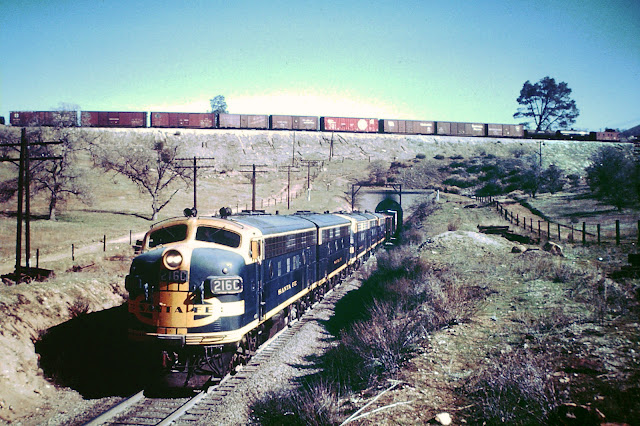The 1.17 km long Tehachapi Loop
is an iconic spiral loop, that passes over itself as it expansions height on
the railroad main line from side to side Tehachapi Pass, in south central
California. The Tehachapi loop was actually built in the 2nd half of the 19th
century as part of Southern Pacific's main line through southern California,
which had to cross the Tehachapi Mountain range. It was finished in less than 2
years’ time under the leadership of civil engineer J. B. Harris, Chief of
Construction, a significant feat.
Therefore, over 3,000 Chinese
immigrant laborers toiled for two years cutting through the solid and hard
granite with blasting powder, and then clearing the wreckage using picks,
shovels, and horse drawn carts, to lay the Tehachapi Pass Railroad Line. The
line, which climbs out of the San Joaquin Valley and through the Tehachapi
Mountains to Mojave in the Antelope Valley, was part of the last and final link
of the first railroad line linking San Francisco to Los Angeles. Though, maybe
no other time was more interesting on Tehachapi than during the steam and
passenger era. However, before the 1971 one could witness trains such as
Southern Pacific's overnight Owl.
The main purpose of constructing the
Tehachapi Loop was to gain elevation at an adaptable gradient, and this has
worked so well for closely 140 years that it continues to be used even nowadays.
In fact, it one of the hectic single-track mainlines in the world with an
average of almost 40 trains passing through the Loop every day. The repeated
trains and the remarkable scenery makes the Loop a prime draw for trains
potters in the country. The marvelous engineering achievement has earned the
Loop the dual status of being a National Historic Civil Engineering Landmark as
well as a California Historical Landmark. During the course of the years there
have been a number of inspiring photos taken capturing this marvel and the
panoramic scenes are quite magnificent.


































